Minimalist design has become a favorite choice for modern living rooms, and it’s easy to see why. This style emphasizes simplicity, functionality, and a clean aesthetic, creating calm and inviting spaces.
By focusing on essential elements and reducing visual clutter, minimalist living rooms offer a sense of order and tranquility, making them best for unwinding after a long day or hosting friends and family.
A minimalist approach works particularly well in living rooms because it highlights the room’s purpose, comfort, and connection without unnecessary distractions.
In this article, I will share 10 minimalist living room ideas. Whether you’re starting fresh or refining your current space, these minimalist living room ideas will inspire you to create a beautiful, functional retreat that fits your lifestyle.
10 Minimalist Living Room Ideas For Any Home
1. Furniture Selection:
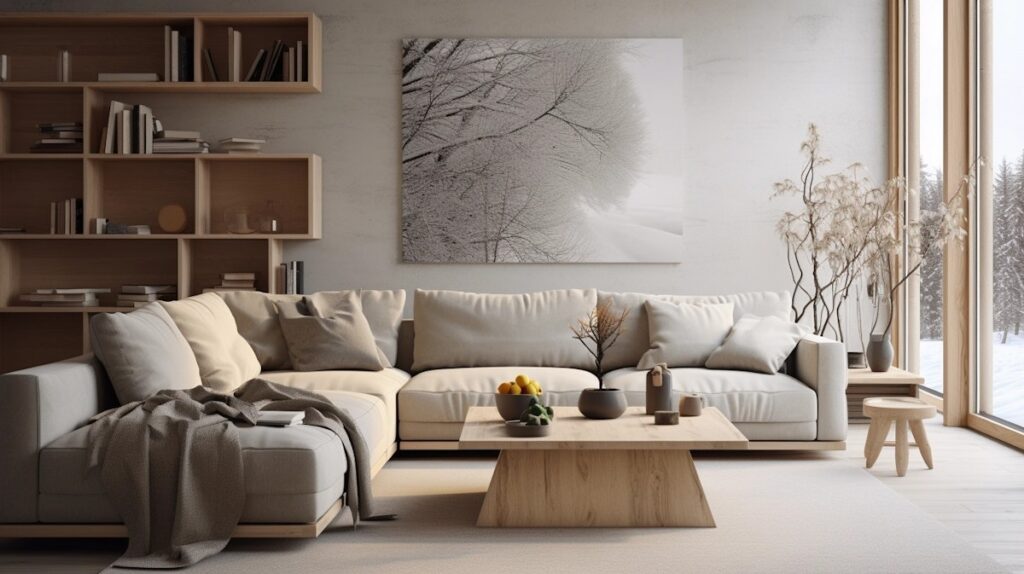
Choosing the right furniture is key to achieving a minimalist living room. Look for pieces that offer both form and function. Multi-purpose furniture, like a sofa bed or an ottoman with hidden storage, can help maximize your space while keeping things tidy.
In smaller living rooms, go for furniture that doesn’t overpower the space. A slim coffee table or a compact sofa can provide the necessary utility without making the room feel cramped. Modular furniture is another great option, as it allows you to customize the layout based on your needs.
Select materials that complement your minimalist aesthetic. Light-colored woods, metal, and glass can add a touch of elegance without being too flashy. Additionally, consider furniture with a neutral color palette to blend seamlessly with your overall design.
2. Natural Elements:
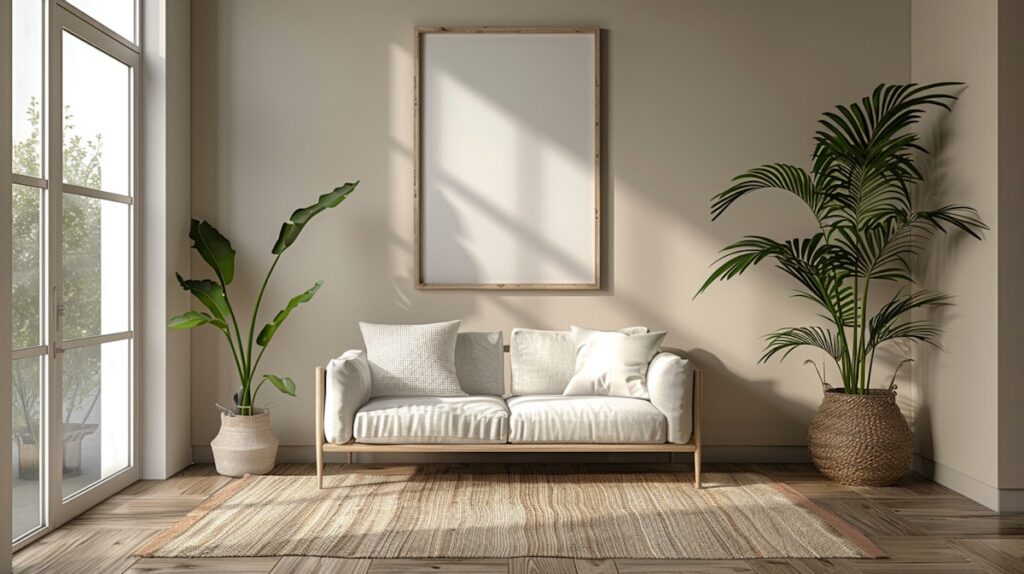
Adding elements from nature can greatly enhance the minimalist appeal of your living room. Houseplants are a great choice, bringing a fresh and calming vibe to the space while also improving air quality. Choose plants with simple, clean lines, such as succulents or snake plants, which require minimal maintenance and fit well with the minimalist aesthetic.
Add wood elements to introduce warmth and texture. A wooden coffee table, shelves, or picture frames can make the room feel inviting and grounded. Light-colored or unfinished wood can maintain the open and airy feel of your minimalist space.
Another way to bring nature indoors is through natural light. Maximize the natural light in your living room by keeping windows open and using light, airy window treatments. This not only brightens the room but also highlights the natural elements within it.
3. Minimalist Wall Art:
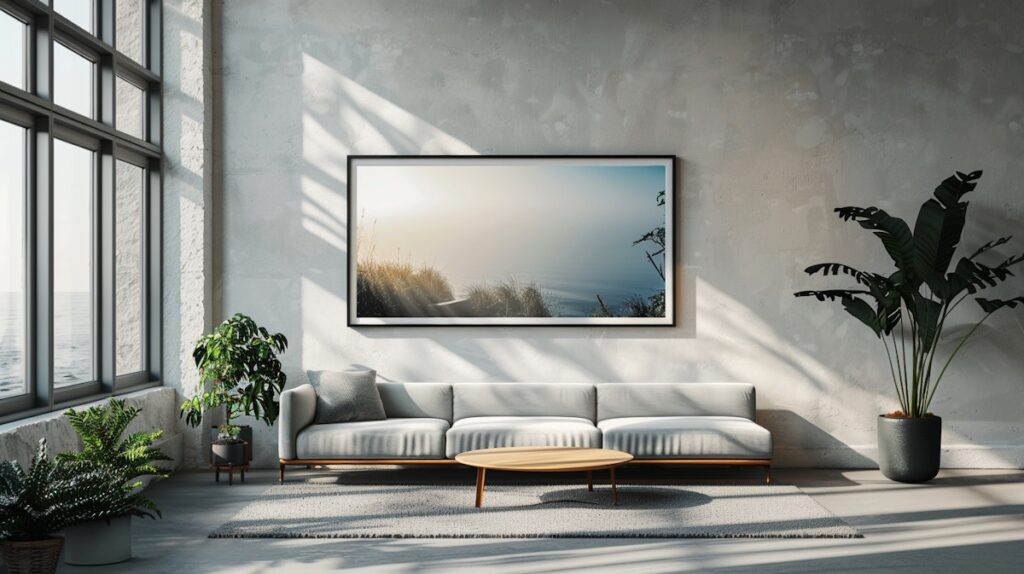
Minimalist wall art can transform your living room without overwhelming it. The key is to select pieces that are simple yet impactful. Think about clean lines or geometric shapes. One large statement piece can serve as a focal point, drawing the eye without cluttering the space.
If you prefer multiple pieces, try arranging them in a symmetrical grid or along a straight line to maintain order. This method keeps the look cohesive and tidy. Black and white photography can also be a great option, providing a timeless and elegant touch.
Consider frames with simple designs to match the minimalist aesthetic. Thin, metal frames or unframed canvases work well and keep the focus on the art itself.
Another idea is to use floating shelves to display a few curated pieces. This way, you can easily change the artwork without needing to make new holes in the walls. The shelves can also be used to showcase small sculptures or plants, adding a bit of variety to your wall decor.
4. Declutter the Space:

Decluttering is a fundamental aspect of achieving a minimalist living room. Start by evaluating each item in your space and ask yourself whether it serves a purpose or brings you joy.
Items that don’t meet these criteria should be stored away, donated, or discarded. This process helps to create a clean and organized environment where each piece has a meaningful role.
Focus on maintaining clear surfaces. Coffee tables, shelves, and other flat surfaces should be free from unnecessary items. This not only enhances the visual appeal but also makes the room feel more spacious.
Use storage solutions like baskets, bins, and boxes to keep smaller items neatly tucked away. These can be stored in cabinets, under furniture, or in closets to maintain a tidy appearance.
5. Open and Airy Layouts:
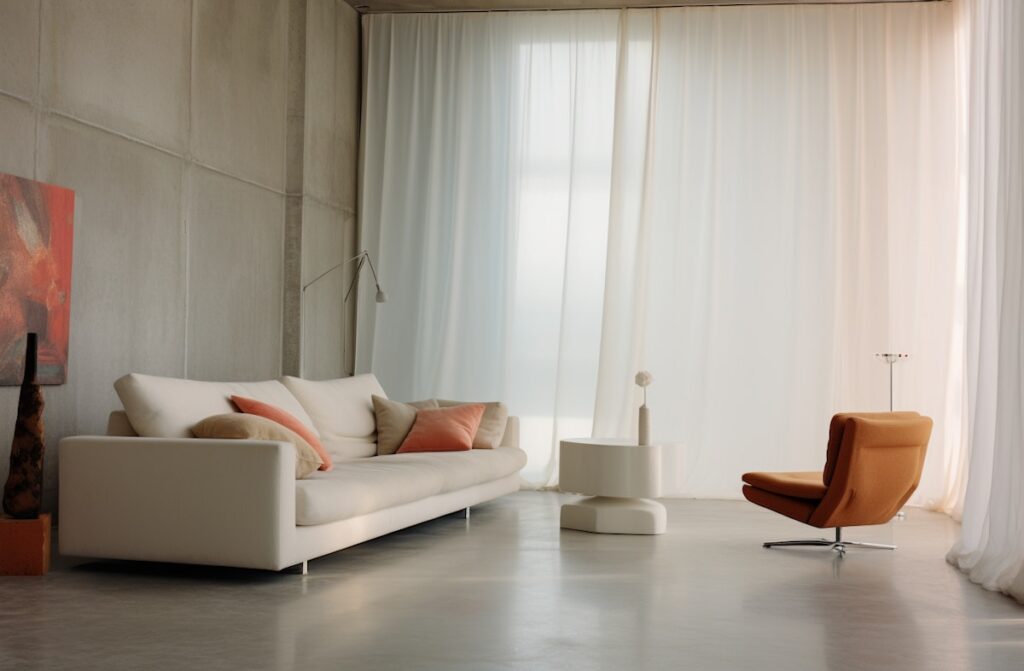
An open and airy layout is essential for creating a minimalist living room that feels spacious and inviting. Start by minimizing barriers in the room; avoid bulky furniture that can obstruct movement. Instead, go for sleek, low-profile pieces that promote a sense of openness.
Arrange your furniture in a way that encourages easy flow and movement, allowing you to navigate the room effortlessly.
Natural light plays a crucial role in enhancing an open layout. Keep windows free from heavy drapes or dark shades. Light, sheer curtains, or even no window coverings at all can let in maximum sunlight, making the space feel brighter and more expansive.
Mirrors can also amplify natural light and give the illusion of more space. Position a large mirror opposite a window to reflect light and create depth.
6. Simple Lighting Solutions:
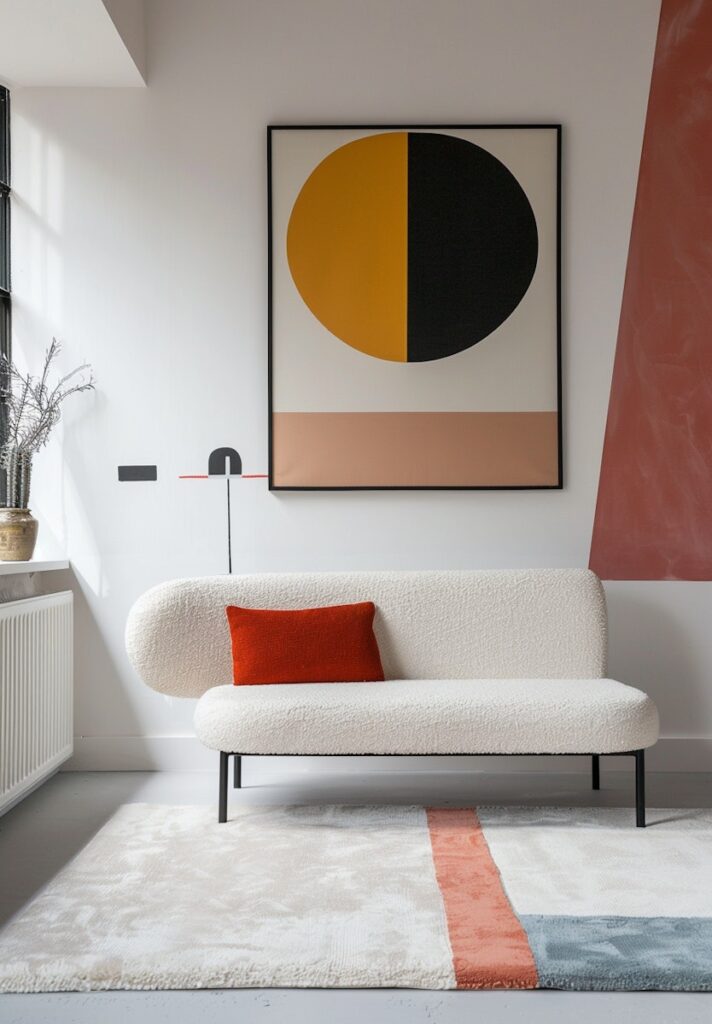
Lighting plays an essential role in setting the mood and enhancing the minimalist aesthetic of your living room. Aim for a combination of natural and artificial lighting to create a balanced and inviting atmosphere. Natural light is your best friend in a minimalist space, so keep windows open and use light, such as sheer curtains, to let in as much daylight as possible.
For artificial lighting, go for simple yet elegant fixtures that complement your decor. A sleek floor lamp or a minimalist pendant light can add a stylish touch without overwhelming the room.
Adjustable lamps are a great choice, allowing you to direct light where it’s needed most. Look for fixtures with clean lines and neutral colors to maintain the cohesive look of your space.
Consider using dimmable lights to adjust the brightness according to the time of day and your mood. Soft, warm lighting can create a cozy space in the evenings.
7. Cozy Textures:
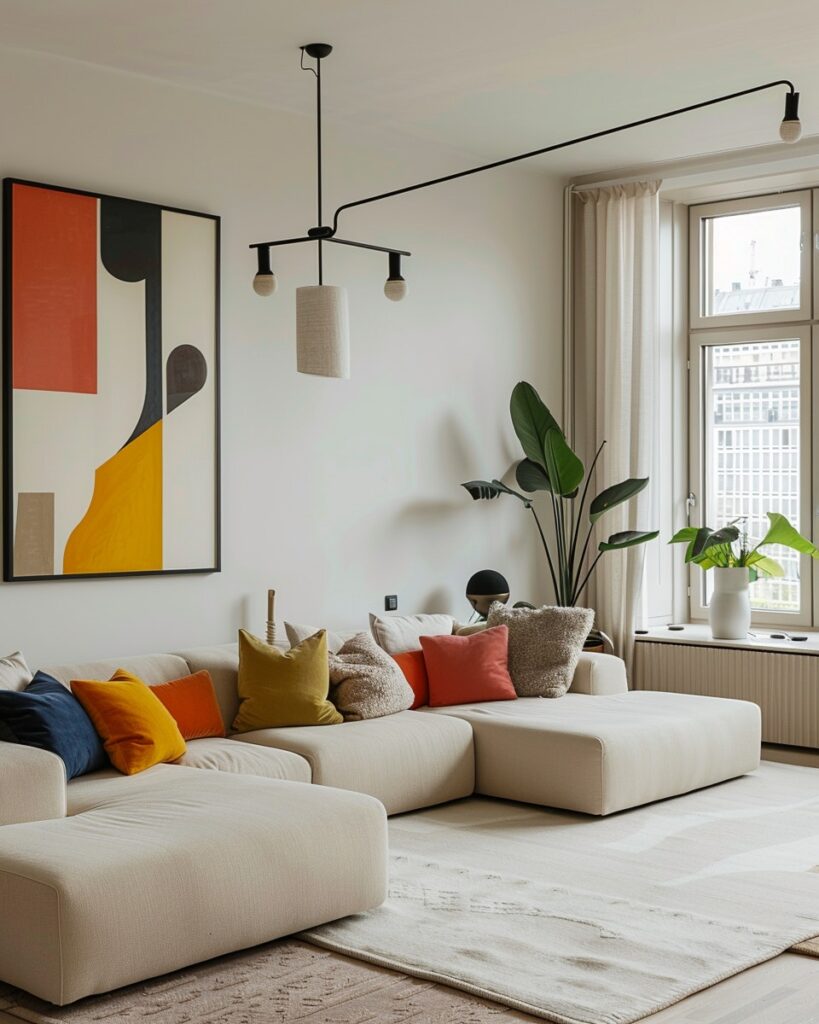
In a minimalist living room, comfort is still key. To achieve a cozy feel without sacrificing simplicity, consider incorporating soft textures through thoughtfully chosen fabrics and materials.
Start with a plush rug underfoot, which can add warmth and a tactile element to the room. Go for natural fibers like wool or cotton that are both comfortable and durable.
Layering is another way to introduce texture. Drape a soft throw blanket over the arm of your sofa or a chair to create an inviting spot for relaxation.
Cushions in varying fabrics, such as linen, velvet, or knitted textiles, can add visual interest without overwhelming the minimalist aesthetic.
Stick to a neutral palette to maintain cohesion, but don’t be afraid to mix in subtle patterns or different weaves to keep things interesting.
8. Mindful Space Planning:
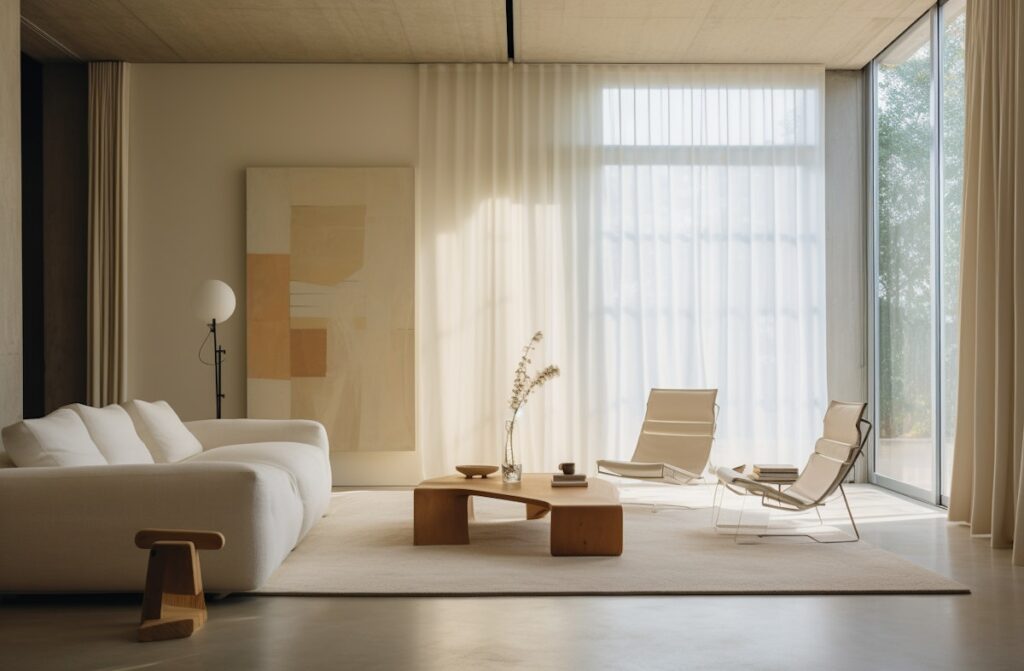
Mindful space planning in a minimalist living room involves carefully arranging your furniture to optimize both flow and function.
Start by identifying the main activities that will take place in the room, such as reading, watching TV, or socializing. Position your furniture in a way that supports these activities, ensuring that each piece serves a purpose.
To maintain an open and airy feel, avoid pushing all your furniture against the walls. Instead, create conversation areas by grouping seating together.
This arrangement not only makes the space more inviting but also encourages interaction. Think about pathways and ensure there is enough room to move around comfortably.
9. Create a Focal Point:
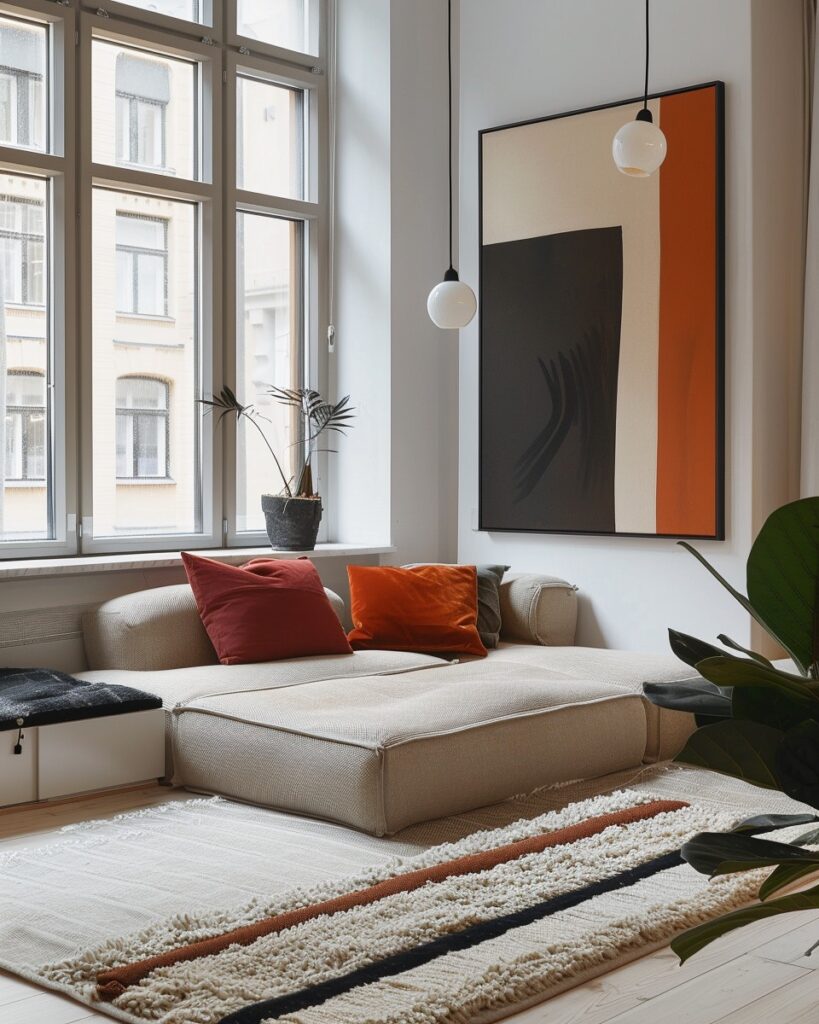
A focal point can transform your small living room, making it feel intentional and cohesive.
Start by choosing one standout element, such as a piece of art, a bold piece of furniture, or even an eye-catching rug. This focal point will naturally draw attention and set the tone for the rest of the room’s decor.
If you have a favorite painting or a striking photograph, consider hanging it above the sofa or mantle to make it the room’s centerpiece. The key is to select something that speaks to your style and enhances the overall aesthetic of your space.
10. Personal Touches:
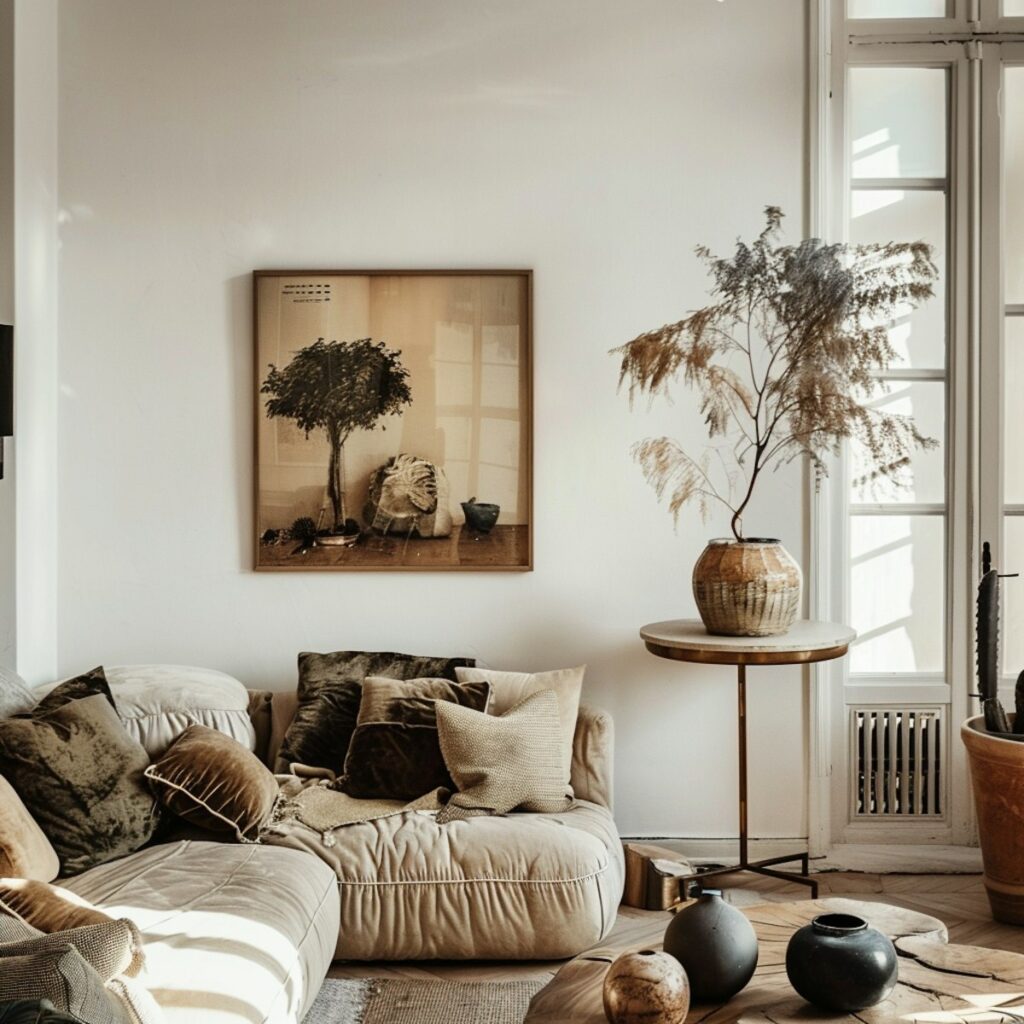
Personalizing your minimalist living room involves adding items that resonate with you while maintaining the clean, uncluttered look. Choose a few meaningful objects, such as a souvenir from a memorable trip, to give the space character. Display these items thoughtfully, ensuring they blend seamlessly with the overall aesthetic.
Books with beautiful covers can double as decorative pieces, adding both personality and function. A well-chosen piece of art or a handcrafted item can also serve as a subtle yet impactful touch, reflecting your unique taste.
To keep your space cohesive, limit the number of personal items you display. Using decorative trays or small shelves can help you curate a select few items without cluttering surfaces.
Related Posts:
- 17 Simple Living Room Ideas
- 11 Cozy Living Room Ideas
- 14 Ways To Make Your Living Room Cozy
- 18 Small Apartment Living Room Ideas
- 16 Farmhouse Living Room Ideas
- 10 Minimalist Living Room Ideas For Any Home - March 26, 2025
- 19 Studio Apartment Ideas - March 23, 2025
- 14 Ways To Make Your Living Room Cozy - March 15, 2025

